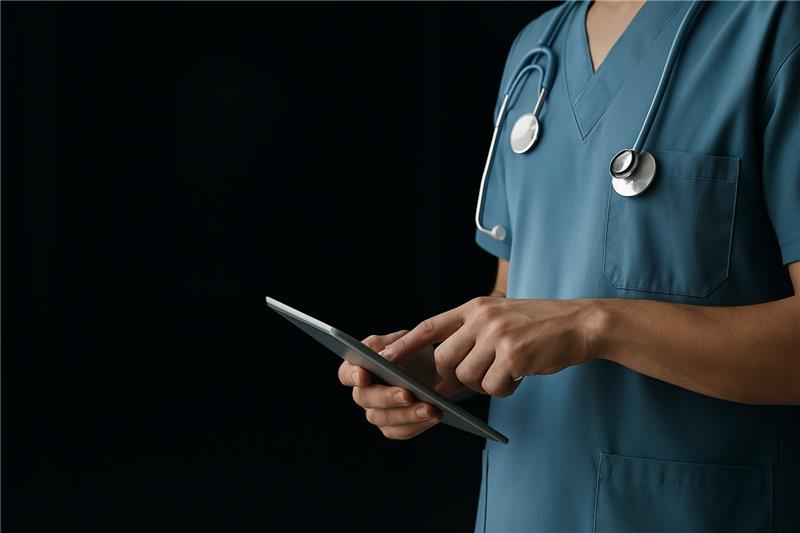
Healthcare Simulation: A Strategic Imperative for Modern Medical Education and Practice
Healthcare simulation has emerged as a cornerstone in contemporary medical education, offering a transformative approach to training that enhances clinical competence, fosters interprofessional collaboration, and prioritizes patient safety. As healthcare systems worldwide grapple with increasing complexity and the imperative for error reduction, simulation-based learning provides a controlled, risk-free environment for practitioners to hone their skills and decision-making abilities.?
The Evolution and Significance of Simulation in Healthcare
Historically, medical training relied heavily on didactic instruction and real-time patient interactions. However, ethical considerations and the need for patient safety have necessitated alternative methods. Simulation-based education addresses these concerns by allowing learners to engage in realistic clinical scenarios without endangering patients.?
Simulation encompasses a range of modalities, including high-fidelity mannequins, virtual reality environments, and standardized patient interactions. These tools enable the replication of complex medical situations, allowing learners to practice procedures, develop critical thinking skills, and receive immediate feedback.?
Core Components of Effective Simulation-Based Learning
1. Skill Acquisition and Competency Development
Simulation provides a platform for learners to acquire and refine clinical skills in a structured setting. By engaging in repetitive practice, trainees can achieve proficiency in procedures such as intubation, catheterization, and resuscitation. This hands-on experience is crucial for building muscle memory and ensuring readiness for real-world application.?
2. Enhancement of Clinical Decision-Making
Through exposure to diverse clinical scenarios, simulation fosters the development of critical thinking and decision-making abilities. Learners are challenged to assess situations, prioritize interventions, and adapt to evolving circumstances, thereby preparing them for the dynamic nature of clinical practice.?
3. Promotion of Interprofessional Collaboration
Healthcare delivery is inherently collaborative, requiring seamless communication among various professionals. Simulation exercises often involve multidisciplinary teams, promoting understanding of roles, improving communication skills, and enhancing team dynamics.?
4. Emphasis on Patient Safety
By allowing practitioners to practice and perfect their skills in a controlled environment, simulation reduces the likelihood of errors in actual patient care. This proactive approach to training underscores a commitment to patient safety and quality improvement.?
Implementation Strategies for Simulation in Healthcare Settings
1. Curriculum Integration
Incorporating simulation into medical curricula requires careful planning to align with learning objectives and competencies. Simulation sessions should be strategically placed to reinforce theoretical knowledge and provide practical application opportunities.?
2. Faculty Development
Effective simulation-based education necessitates trained facilitators who can design scenarios, guide learners, and conduct debriefings. Investing in faculty development ensures the quality and consistency of simulation experiences.?
3. Infrastructure and Resource Allocation
Establishing simulation centers equipped with appropriate technology and resources is essential. Institutions must allocate funding for equipment, maintenance, and personnel to support ongoing simulation activities.?
4. Assessment and Evaluation
Implementing robust assessment tools to evaluate learner performance during simulations provides valuable feedback and identifies areas for improvement. Continuous evaluation of simulation programs ensures they meet educational goals and adapt to evolving needs.?
Challenges and Considerations
1. Cost Implications
The initial investment in simulation technology and infrastructure can be substantial. Institutions must weigh these costs against the long-term benefits of improved clinical competence and patient outcomes.?
2. Standardization of Practices
Developing standardized protocols and scenarios is crucial for ensuring consistency and reliability in simulation-based education. Collaboration among institutions can facilitate the sharing of best practices and resources.
3. Technological Advancements
Staying abreast of technological innovations is necessary to enhance the realism and effectiveness of simulations. Incorporating emerging technologies such as virtual reality and artificial intelligence can further enrich the learning experience.?
4. Cultural and Organizational Integration
Fostering a culture that values simulation as a legitimate and essential component of medical education is vital. Leadership support and organizational commitment are key to successful integration.?
Future Directions and Opportunities
The trajectory of healthcare simulation points toward increased utilization and sophistication. Advancements in technology will enable more immersive and personalized learning experiences. Furthermore, simulation will play a pivotal role in ongoing professional development, competency assessment, and systems-based practice improvement.?
As per the report published by MarketsandMarkets, The global healthcare simulation market, valued at US$1.9 billion in 2022, is forecasted to grow at a robust CAGR of 15.7%, reaching US$2.2 billion in 2023 and an impressive US$4.6 billion by 2028.
Conclusion
Healthcare simulation stands as a transformative force in medical education, offering a safe and effective means to develop clinical skills, enhance decision-making, and promote patient safety. By embracing simulation-based learning, healthcare institutions can cultivate a workforce that is competent, confident, and prepared to meet the complexities of modern patient care. Strategic investment in simulation infrastructure, faculty development, and curricular integration will yield dividends in the form of improved clinical outcomes and a culture of continuous learning.
80% of the Forbes Global 2000 B2B companies rely on MarketsandMarkets to identify growth opportunities in emerging technologies and use cases that will have a positive revenue impact.
- Leading Automated Guided Vehicle Companies 2024: An In-depth Analysis
- CHARGED UP: SHIFT TO E-MOBILITY AND THE EVOLUTION OF TRANSPORTATION
- Global Automotive Market: Predictions For 2024
- Revolutionizing Depot Charging: Hockey Stick Growth on the Cards
- The Future of Silicon Battery Industry: Innovations and Market Outlook


